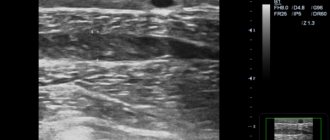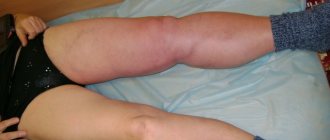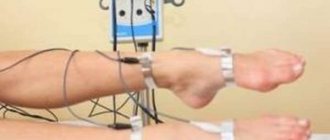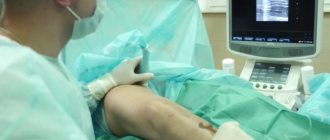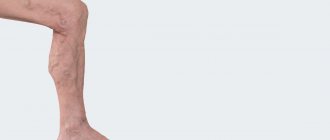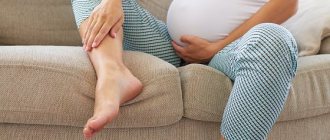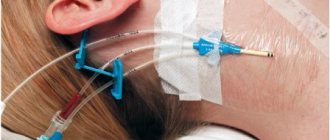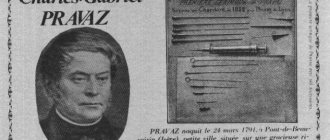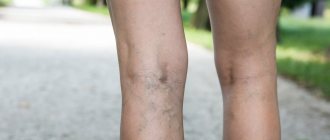Excision of the affected vessel with all varicose nodes is a priority when conservative therapy fails and the pathology becomes severely chronic. Today, traditional phlebectomy is a combination of several surgical techniques and surgical stages, selected for each patient individually, in the interests of a specific predicted effect.
The only goal for combined phlebectomy is to normalize healthy blood flow to minimize the risk of irreversible complications. Despite the fact that the doctors of our department direct all efforts to preserve the integrity of blood vessels, removal of veins often becomes a necessary measure in the adequate treatment of varicose veins.
How are veins removed for varicose veins? Is it removed completely or partially?
Depending on the volume of the lesion, the vein can be removed completely or only a fragment of the vessel is removed.
Through punctures in the skin or small incisions, the doctor ties the affected vein where it enters a deeper vessel and then removes it. In the lower extremities there are superficial and deep veins, which are connected by small vessels. At any given time, veins contain 70% of all the blood that flows through the legs. The veins of the lower extremities, even the smallest ones, are equipped with valves, the distance between which is from 1 to 10 cm.
Modern medical technologies make it possible to perform operations on the veins of the lower extremities carefully, so that after them there are no large scars or scars left on the legs. If the vein was removed through a puncture, then even stitches are not needed: the doctor simply seals the puncture with a plaster.
How is phlebectomy performed?
For the stem type of varicose veins, combined phlebectomy may include the following steps:
- Proximal or distal (upper or lower) crossectomy – intersection and ligation of the great and small saphenous veins in the area of anastomoses with deep vessels. In its own form, such an operation is performed only in emergency cases, when there is a possibility of thrombosis spreading from the saphenous veins to the deep ones. Alternative methods of surgical crossectomy in combined phlebectomy can be EVLT and radiofrequency ablation.
- Stripping is excision of the trunk of a superficial vein (large or small). It can be performed using the following techniques: Babcock probing, cryostripping, PIN stripping, invagination (inversion) stripping. The specific method is selected based on the patient’s indications and contraindications.
- Elimination of perforating discharge - suprafascial or subfascial ligation of perforating veins. Relevant for incompetent large-caliber communication veins. If smaller vessels are affected, their ligation is carried out using the miniphlebectomy method. The endoscopic technique of ligation of perforators is practiced in the presence of pronounced trophic changes in the tissue of the lower leg. As a full replacement for such an operation, ECHO sclerotherapy or EVLO of perforating veins is performed, but this is not advisable in all cases.
- Miniphlebectomy – resection of varicose nodes and a few varicose tributary vessels through miniature punctures. Isolated miniphlebectomy is used to treat the initial stages of varicose veins, for example, if a single perforating vein is affected. Compression sclerotherapy has similar effects on modified vessels, and therefore is often practiced as an alternative to miniphlebectomy.
Classic phlebectomy is performed in a hospital setting under general anesthesia or epidural (spinal) anesthesia. A stay in the hospital under the supervision of a doctor is mandatory for 5-7 days. Upon completion of surgical procedures, cosmetic sutures are applied to the incisions and punctures, and the lower limb is compressed with special bandage stockings or elastic bandages.
What are the consequences of removing a vein in the leg? How does the blood drain after this?
Varicose veins are typical for superficial veins, which account for only 10% of venous blood flow. The remaining 90% of the blood flows through the deep veins, which take on additional load after removal.
If the patient still has doubts about the advisability of the operation, then an additional argument in favor of removing the vein can be the fact that the varicose vein is already practically cut off from their blood flow. It cannot ensure the normal movement of blood, which stagnates in it, still stretching the vascular wall. That is why the main “consequence” of phlebectomy (vein removal surgery) is the normalization of blood circulation in the extremities.
Complications after phlebectomy
As with any other operation, complications may occur after phlebectomy, so it is very important to carry out rehabilitation correctly. Among the complications that may occur due to phlebectomy are the following:
- Damage to nerve fibers: sensitivity of the limbs is impaired;
- Bruises on the legs;
- Insufficient wound care in diabetes mellitus can lead to suppuration;
- Blood coagulation pathologies: bleeding is possible, as well as the opposite - bleeding;
- Blood flow disorders: eczema;
- Pulmonary embolism: a blood clot from a vein enters the vessels of the lungs.
How long is the postoperative period after vein surgery?
The period of hospital stay after the operation is limited to one day. This is necessary for the doctor to monitor the patient’s condition after anesthesia, as well as to change the dressing every other day.
After discharge from the clinic, it is recommended to spend a week at home, but not on bed rest. After surgery to remove varicose veins, movement is indicated: the patient needs to walk more.
After the operation, patients feel better: after all, the diseased vein is no longer there. But many people are concerned about the appearance of their legs. Remaining cosmetic defects can be removed using sclerotherapy.
Regimen and restrictions after the RFA procedure (radiofrequency obliteration (ablation) procedure) or EVLT (endovascular laser coagulation) . Advice from an experienced patient - I underwent radiofrequency surgery (EVLT), how to behave and what to do after the operation. The patient's regimen and possible restrictions after endovascular (intravascular) surgery.
After RFA or EVLT procedure:
Having received recommendations and a statement from the doctor about the manipulation performed (RFA or EVD) on varicose veins, you can safely go home. A walk lasting 1 hour, while you can calmly lean on the operated leg, there is no need to limp or “take care” of the leg (the leg doesn’t hurt!). Walk with a normal gait to your home, to your destination. After the procedure, the motor mode is normal; I do not recommend jumping, running or lifting weights for a month. You can lie down, sit.
You can get up and walk, but without fanaticism.
If you are traveling in a car or bus, periodically, every 20-30 minutes, you should perform short exercises, bending and straightening your feet. When you stop (for example, after 1 hour), get up and walk around calmly, warm up carefully.
The compression stocking should not be removed until the time (before examination) prescribed by the operating doctor.
You should come for a consultation at the appointed time. The doctor will conduct a control ultrasound and change the bandages. There is no need to change the dressings every day - you “touch” less and it heals better.
In the evening in bed, before going to bed, you can remove the compression stocking (without removing the “internal” bandages), wipe your leg with wet wipes or a towel, and then put on the compression stocking. Exposed parts of the operated limb, with increased dryness, can be treated with moisturizing cream (must be completely absorbed before putting on the stocking).
You cannot stand or walk without compression; for how long is determined by your operating doctor (usually from 7 to 30 days). You can remove the compression stocking for 10-15 minutes while sitting on the sofa or in bed with your leg in a horizontal position. Temporarily change physical education to chess combined with walking.
The doctor allowed you to remove the bandages yourself; you need to remove them in the evening before going to bed. If ichor comes out through the punctures, treat them with a 5% solution of boric alcohol. After treatment, let the punctures “dry” and go to sleep quietly. It is better to start water procedures after the punctures have completely healed (the crust should fall off), otherwise the scar at the puncture site will be rougher.
Treat punctures only with an alcohol solution (the best is 5% boric alcohol). Do not use aqueous solutions - miramistin, chlorhexedine, peroxide, etc.
What medications should I take after RFA (radiofrequency obliteration (ablation) procedure) or EVLT (endovascular laser coagulation) procedure?
For pain, anti-inflammatory drugs:
Ortofen 25 (50) mg 2 times a day, after meals, with a small amount of water, course 5 - 7 days.
Antibiotics are rarely prescribed. If necessary, the operating doctor will definitely prescribe it.
Medicines for veins - antistax, venarus or phlebopa, are also usually prescribed by your doctor. The course is usually from 2 weeks to 2 months.
How long should I wear compression stockings after the procedure when I can walk without stockings?
For the first 3-5 days, you should wear compression stockings day and night. It is possible to remove the jersey before going to bed (with the legs in a horizontal position), wipe the legs with a damp towel or napkins, and moisturizer if necessary.
In advanced stages, if there were ulcers, swelling, or skin pigmentation before the procedure, the compression should be worn longer - up to several months. Perhaps in such cases, UHF No. 10 is applied to “painful” areas (the operating doctor will indicate).
Water procedures - the ichor has stopped oozing and the crusts have fallen off (the punctures have healed), wash for good health. However, if discharge through punctures persists, treat these areas with 5% boric alcohol and temporarily refrain from showering (you can wash in parts, only carefully - the bath is a danger zone).
When can you play sports?
Athletic exercises (running, race walking, exercise bike) are possible 15 days after the RFA (radiofrequency obliteration (ablation) procedure) or EVLT (endovascular laser coagulation) procedure.
Optimally - medi sports compression stockings (your surgical compression stocking will also work).
You can go to the pool 15 days after the procedure.
Baths or saunas are possible 1 - 3 months after the RFA procedure (radiofrequency obliteration (ablation) procedure) or EVLT (endovascular laser coagulation).
Have questions? Call: +7 342 204-78-88
Removal of varicose veins in 3 hours, results for life!
Treatment results for our patients
Disease: varicose veins
Treatment method: EVLT + MINIFLEBECTOMY
Combined treatment of varicose veins. Endovasal laser obliteration of the vein on the left leg (EVL) + Miniphlebectomy
Disease: varicose veins
Treatment method: EVLT + MINIFLEBECTOMY
Laser treatment (EVLT) followed by miniphlebectomy of the tributaries of the great saphenous vein on the thigh and shin of the right leg. Miniphlebectomy of varicose veins.
Disease: Telangiectasia
Treatment method: Foam sclerotherapy
To remove the stars, the patient underwent a session of microfoam sclerotherapy (Foam-Form) of the reticular veins under the control of laser transillumination.
Disease: varicose veins
Treatment method: EVLT + MINIFLEBECTOMY
Upon examination of the patient, varicose veins were diagnosed on the right leg. Combined treatment with EVLT + miniphlebectomy was performed.
FEELINGS IN THE FIRST DAYS AFTER SCLEROTHERAPY
Don't expect the veins to disappear instantly. The first visual changes will be observed only after a week, but for now you will see small bruises and spider veins. Gradually, the skin will acquire a yellowish tint and then return to its normal appearance. You will observe a gradual disappearance of pigment spots on the skin and a decrease in compaction.
Sometimes stripes of a pale brown color appear, and bumps in which fluid accumulates may become larger. At your next examination, the doctor will relieve you of them. A slight pain at the moment of touch and a pulling sensation when walking should not alarm you. Everything goes well. Keep moving. Remember, after sclerotherapy you can and should walk for at least 60 minutes. Don't forget to wear compression stockings.
You will be invited to your first examination in 14 days. This will be an ultrasound, after which you can make a first assessment of the results.
Subsequent examinations will take place according to a personal schedule. Unscheduled checks are also possible if the pain still persists. If necessary (if poorly glued areas are detected), additional sessions are carried out.
During treatment with sclerotherapy, the veins are completely restored to the initial stage of varicose veins, and cosmetic defects disappear.
An additional examination is carried out every year. After sclerotherapy, the recovery process goes quickly, but it is important to flawlessly follow all the specialists’ instructions.
Life before and after sclerotherapy - permissions and prohibitions
Some patients find it difficult to wear compression garments all the time. But this is not required. It is enough to wear it during the day and give your feet a rest at night. The first two weeks need to be monitored with special care. Don't forget about movement and daily walks. Monitor your general health. If you suffer from headaches, know that you cannot tolerate them. Be sure to take the medications prescribed for this case.
Remember the prohibitions! In any restorative practice there are always taboos:
- Overheating of the body is unacceptable for the first 3-4 weeks. After sclerotherapy, you should not take sunbathing or bathing procedures in any form.
- To avoid active blood flow to the veins, postpone foot massage until later.
- If you are used to constant sports or physical activity in the gym, you should give up those too.
- Forget about weights for a while.
After sclerotherapy, you should not expose yourself to large pressure changes, so avoid flying in the first 2-4 weeks. And hypertensive patients are advised to monitor their health more carefully.
Should you protect yourself from work?
After sclerotherapy, you can move actively, but there is no need for a lot of overexertion. If you are an office worker or your work involves moderate movements and walking at an average pace, then continue to work. But remember that a sedentary lifestyle is also unacceptable. Do you have to sit often? Then take short breaks with light warm-up and walking.
Well, for those whose activities involve heavy weights and who are actively involved in sports, they should protect themselves from these loads during the rehabilitation period. They can be resumed only with the permission of the attending physician.
Contact Dobromed! Make an appointment with a phlebologist and undergo effective sclerotherapy treatment.

